 W
WAn aqueduct is a watercourse constructed to carry water from a source to a distribution point far away. In modern engineering, the term aqueduct is used for any system of pipes, ditches, canals, tunnels, and other structures used for this purpose. The term aqueduct also often refers specifically to a bridge carrying an artificial watercourse. Aqueducts were used in ancient Greece, ancient Egypt, and ancient Rome. In modern times, the largest aqueducts of all have been built in the United States to supply large cities. The simplest aqueducts are small ditches cut into the earth. Much larger channels may be used in modern aqueducts. Aqueducts sometimes run for some or all of their path through tunnels constructed underground. Modern aqueducts may also use pipelines. Historically, agricultural societies have constructed aqueducts to irrigate crops and supply large cities with drinking water.
 W
WBaptist well drilling is a very simple, manual method to drill water wells. The Baptist drilling rig can be built in any ordinary arc welding workshop and materials for a basic version costs about 150 US dollars. In suitable conditions, boreholes over 100 m deep have been drilled with this method.
 W
WA chultun is a bottle-shaped underground storage chamber built by the pre-Columbian Maya in southern Mesoamerica. Their entrances were surrounded by plastered aprons which guided rainwater into them during the rainy seasons. Most of these archaeological features likely functioned as cisterns for potable water.
 W
WA cistern is a waterproof receptacle for holding liquids, usually water. Cisterns are often built to catch and store rainwater. Cisterns are distinguished from wells by their waterproof linings. Modern cisterns range in capacity from a few litres to thousands of cubic metres, effectively forming covered reservoirs.
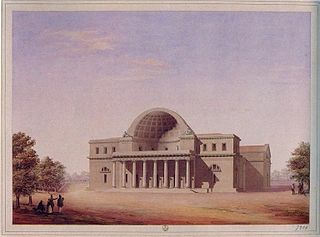 W
WThe Cisternoni of Livorno are a series of three large buildings in the neoclassical style at Livorno, in Tuscany, Italy. They were constructed between 1829 and 1848 as part of a complex of purification plants and storage tanks to the Leopoldino aqueduct; a fourth cisternone planned at Castellaccia was never built. The cisternoni, literally "great cisterns", provided Livorno — a city that is still today one of the principal ports of the Mediterranean — with fresh and, more importantly, clean water throughout the 19th and 20th centuries.
 W
WThe Cisternoni of Livorno are a series of three large buildings in the neoclassical style at Livorno, in Tuscany, Italy. They were constructed between 1829 and 1848 as part of a complex of purification plants and storage tanks to the Leopoldino aqueduct; a fourth cisternone planned at Castellaccia was never built. The cisternoni, literally "great cisterns", provided Livorno — a city that is still today one of the principal ports of the Mediterranean — with fresh and, more importantly, clean water throughout the 19th and 20th centuries.
 W
WCoker Spring is a fresh water spring located on Coker Spring Road in Aiken, South Carolina. This spring is formed by a "junction" where the water table intersects the ground surface and according to archaeological remains, has been used since prehistoric times. Coker Springs was listed in the National Register of Historic Places on January 18, 1978.
 W
WCopton Mill is a tower mill in Copton, Faversham, Kent, England that was built in 1863 to pump water for Faversham Water Company's waterworks. It is just south of junction 6 of the M2 motorway.
 W
WCrux Easton wind engine is a Grade II listed Titt wind engine at Crux Easton, Hampshire, England which has been restored to working order.
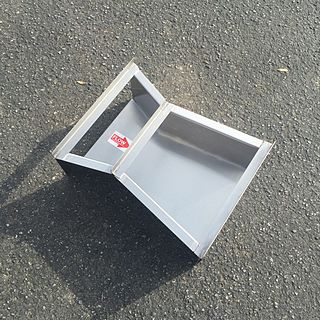 W
WThe Cutthroat flume is a class of flow measurement flume developed during 1966/1967 that is used to measure the flow of surface waters, sewage flows, and industrial discharges. Like other flumes, the Cutthroat flume is a fixed hydraulic structure. Using vertical sidewalls throughout, the flume accelerates flow through a contraction of sidewalls until the flow reaches the "throat" of the flume, where the flow is then expanded. Unlike the Parshall flume, the Cutthroat flume lacks a parallel-walled throat section and maintains a flat floor throughout the flume.
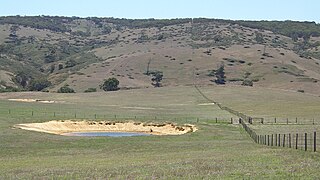 W
WA dam is a water reservoir in the ground, confined by a barrier, embankment or excavation, on a pastoral property or similar. The term is found widely in South African, Australian and New Zealand English, and several other English dialects, such as that of Yorkshire.
 W
WA dhunge dhara or hiti (Newari) is a traditional stone drinking fountain found in Nepal. It is an intricately carved stone waterway through which water flows uninterrupted from underground sources. Dhunge dharas are part of a comprehensive drinking water supply system, commissioned by various rulers of Ancient and Medieval Nepal. The system is supported by numerous ponds and canals that form an elaborate network of water bodies, created as a water resource during the dry season and to help alleviate the water pressure caused by the monsoon rains. After the introduction of modern, piped water systems, starting in the late 19th century, this old system has fallen into disrepair and some parts of it are lost forever. Nevertheless, many people of Nepal still rely on the old hitis on a daily basis.
 W
WA furphy is Australian slang for an erroneous or improbable story that is claimed to be factual. Furphies are supposedly 'heard' from reputable sources, sometimes secondhand or thirdhand, and widely believed until discounted. The word is said to derive from water carts designed and made by a company established by John Furphy of J. Furphy & Sons of Shepparton, Victoria. The steel and cast iron tanks were first made in the 1880s and were used on farms and by stock agents. Many Furphy water carts were used to take water to Australian Army personnel during World War I in Australia, Europe and the Middle East.
 W
WA hafir is an artificially constructed water catchment basin with a circular earthen wall and diameters of between 70-250 m and heights of up to 7 m. Adapted to semi-desert conditions, the hafirs catch the water during the rainy season to have it available for several months during the dry season to supply drinking water, irrigate fields and water cattle. It is used in central Sudan from time immemorial.
 W
WThe Cisternoni of Livorno are a series of three large buildings in the neoclassical style at Livorno, in Tuscany, Italy. They were constructed between 1829 and 1848 as part of a complex of purification plants and storage tanks to the Leopoldino aqueduct; a fourth cisternone planned at Castellaccia was never built. The cisternoni, literally "great cisterns", provided Livorno — a city that is still today one of the principal ports of the Mediterranean — with fresh and, more importantly, clean water throughout the 19th and 20th centuries.
 W
WA lead service line is a pipe made of lead which is used in potable water distribution to connect a water main to a user's premise.
 W
WLondon Museum of Water & Steam is an independent museum founded in 1975 as the Kew Bridge Steam Museum. It was rebranded in early 2014 following a major investment project.
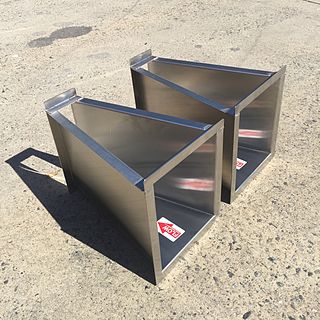 W
WA Montana flume, is a popular modification of the standard Parshall flume. The Montana flume removes the throat and discharge sections of the Parshall flume, resulting a flume that is lighter in weight, shorter in length, and less costly to manufacture. Montana flumes are used to measure surface waters, irrigations flows, industrial discharges, and wastewater treatment plant flows.
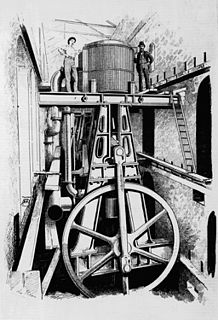 W
WThe Mount Crosby Pumping Station is located on the Brisbane River in the City of Brisbane, Queensland, Australia. It is located on both sides of the river at Mount Crosby on the east bank and at Chuwar on the west bank. The facility supplies water to Brisbane and nearby cities and towns within the SEQ Water Grid. It is listed on the Brisbane Heritage Register.
 W
WNun's Well is an ancient underground water reservoir in the British Overseas Territory of Gibraltar. It is located at Europa Point, and is thought to be of the Moorish period. It represents some of the earliest evidence of an artificial water supply in Gibraltar. The name of the cistern is thought to be derived from the nuns associated with the Shrine of Our Lady of Europe. In the eighteenth century, Nun's Well supplied the military with water. In the early nineteenth century, it provided water for the brewery that was built next door. In 1988, the Royal Engineers constructed what is now the main building, which has a castle-like appearance. Nun's Well became the focus of controversy during the 2010-2011 restoration of the site.
 W
WThe Ottu barrage, sometimes spelled as the Otu barrage and also known as Ottu Head, is a masonry weir on the Ghaggar-Hakra River in Haryana state of India that creates a large water reservoir out of the formerly-small Dhanur lake, located near the village of Ottu, which is about 8 miles from Sirsa in Haryana. It is a feeder for the two Ghaggar canals that carry irrigation water to northern Haryana state. In 2002, a new tourist complex was inaugurated at the barrage, and it was given the honorary name of "Chaudhary Devi Lal Weir" to commemorate the former Chief Minister of Haryana state, Chaudhary Devi Lal. The Dhanur lake reservoir is now often referred to simply as the Ottu reservoir.
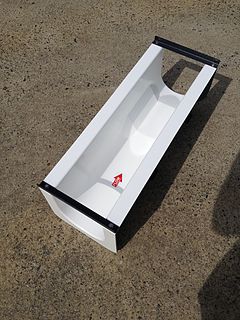 W
WThe Palmer-Bowlus flume, is a class of flumes commonly used to measure the flow of wastewater in sewer pipes and conduits. The Palmer-Bowlus flume has a u-shaped cross-section and was designed to be inserted into, or in line with, pipes and u-channels found in sanitary sewer applications.
 W
WThe Parshall flume is an open channel flow metering device that was developed to measure the flow of surface waters and irrigation flows. The Parshall flume is a fixed hydraulic structure. It is used to measure volumetric flow rate in industrial discharges, municipal sewer lines, and influent/effluent flows in wastewater treatment plants. The Parshall flume accelerates flow through a contraction of both the parallel sidewalls and a drop in the floor at the flume throat. Under free-flow conditions the depth of water at specified location upstream of the flume throat can be converted to a rate of flow. Some states specify the use of Parshall flumes, by law, for certain situations.
 W
WThe Cisternoni of Livorno are a series of three large buildings in the neoclassical style at Livorno, in Tuscany, Italy. They were constructed between 1829 and 1848 as part of a complex of purification plants and storage tanks to the Leopoldino aqueduct; a fourth cisternone planned at Castellaccia was never built. The cisternoni, literally "great cisterns", provided Livorno — a city that is still today one of the principal ports of the Mediterranean — with fresh and, more importantly, clean water throughout the 19th and 20th centuries.
 W
WThe Phare de la méditerranée is an observation tower with a revolving restaurant 45 metres above ground at Palavas-les-Flots in France. It was built in 1943 as a water tower.
 W
WPodolí Waterworks is a big water supply equipment located in capital city of the Czech Republic, Prague, neighborhood Podolí. More precisely, it is located in Prague 4 on the right side of Vltava river between Vyšehrad and Swimming stadium Podolí. The current complex was built between 1925–1929 on the place where former water supply infrastructure was located. In 1990s, it was completely reconstructed. From 2003, it serves only as backup water source in case of failure of other treatment plants. The complex was built in neoclassical architecture style and it is protected as a Cultural monument. It also serves as a Prague Waterworks Museum.
 W
WA rainwater tank is a water tank used to collect and store rain water runoff, typically from rooftops via pipes. Rainwater tanks are devices for collecting and maintaining harvested rain. A rainwater catchment or collection system can yield 2,358 litres (623 US gal) of water from 2.54 cm (1.00 in) of rain on a 92.9 m2 (1,000 sq ft) roof.
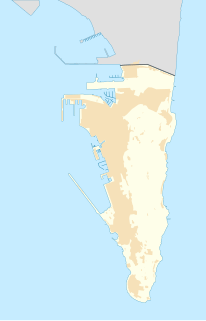 W
WThe Rosia Water Tanks were large water tanks built at the turn of the nineteenth century at Rosia Bay in the British Overseas Territory of Gibraltar. They were constructed based on the recommendation by Admiral John Jervis, 1st Earl of St Vincent that the Victualling Yard complex be relocated to Rosia Bay. The complex allowed Royal Navy vessels to obtain both food and water at one site. The Rosia Water Tanks remained in the possession of the Ministry of Defence until 2004, at which time they were transferred to the Government of Gibraltar. Despite local and international criticism, and a court case brought by the Gibraltar Heritage Trust, the tanks were demolished in 2006 to make way for affordable housing. When developer OEM International's funding proved insufficient to complete the project the government repossessed the site.
 W
WThe Saritphong Dam, also known as Phra Ruang Dam,, is a dam dating back to the Sukhothai Kingdom. It is in the southwest of the UNESCO World Heritage Sukhothai Historical Park in the Mueang Kao Subdistrict of Mueang Sukhothai District of Sukhothai Province in northern Thailand. The Saritphong Dam was built in the 14th century to provide water to the capital of the ancient kingdom Sukhothai.
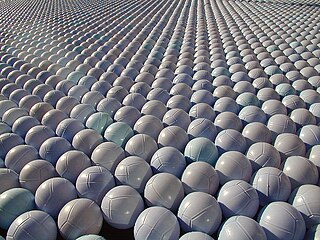 W
WShade balls are small plastic spheres floated on top of a reservoir for environmental reasons, including to slow evaporation and prevent sunlight from causing reactions among chemical compounds present in the water. Also known as bird balls, they were developed initially to prevent birds from landing on bodies of water.
 W
WA water distribution system is a part of water supply network with components that carry potable water from a centralized treatment plant or wells to water consumers in order to adequately deliver water to satisfy residential, commercial, industrial and fire fighting requirements.
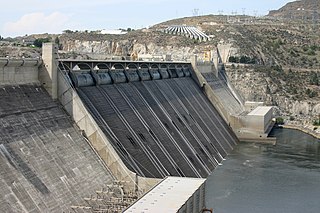 W
WA water supply network or water supply system is a system of engineered hydrologic and hydraulic components that provide water supply. A water supply system typically includes the following:A drainage basin A raw water collection point where the water accumulates, such as a lake, a river, or groundwater from an underground aquifer. Raw water may be transferred using uncovered ground-level aqueducts, covered tunnels, or underground water pipes to water purification facilities. Water purification facilities. Treated water is transferred using water pipes. Water storage facilities such as reservoirs, water tanks, or water towers. Smaller water systems may store the water in cisterns or pressure vessels. Tall buildings may also need to store water locally in pressure vessels in order for the water to reach the upper floors. Additional water pressurizing components such as pumping stations may need to be situated at the outlet of underground or aboveground reservoirs or cisterns. A pipe network for distribution of water to consumers and other usage points Connections to the sewers are generally found downstream of the water consumers, but the sewer system is considered to be a separate system, rather than part of the water supply system.
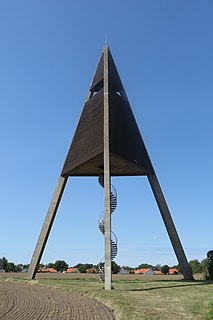 W
WThe Svaneke water tower, in the small town of Svaneke on the Danish island of Bornholm, was designed by award-winning architect Jørn Utzon and completed in 1952. It was the first successful project of the architect who would later design the Sydney Opera House.
 W
WTap water is water supplied to a tap (valve). Its uses include drinking, washing, cooking, and the flushing of toilets. Indoor tap water is distributed through "indoor plumbing", which has existed since antiquity but was available to very few people until the second half of the 19th century when it began to spread in popularity in what are now developed countries. Tap water became common in many regions during the 20th century, and is now lacking mainly among people in poverty, especially on Indian Reservations in the US and in developing countries.
 W
WA tutedhara (Nepali) or jahru (Newari) is a traditional drinking fountain found in Nepal. It is a water reservoir built out of stone with a tap that can be opened and closed. These structures are either free-standing or integrated into the wall of another building. They depend on a water well or a dhunge dhara to be filled. Only a few of them are in use today, but some of the stone parts have been put to other uses, and there are contemporary equivalents. The best known tutedhara is the one built into a wall in the royal palace on Kathmandu Durbar Square. It is inscribed with a poem dedicated to the goddess Kali, written in fifteen different languages.
 W
WWater cribs are offshore structures that collect water from close to the bottom of a lake to supply a pumping station onshore. The name crib is derived from the function of the structure—to surround and protect the intake shaft. Cities supplied with drinking water collected by water cribs include Chicago, where two of the nine originally built cribs are in active use. Water cribs were also used as residences for caretakers who would live in the structure year round. Jobs included clearing debris and maintaining valves, gears, and instruments to keep the water flowing. These jobs have since been automated with periodic maintenance leaving no need for a full-time caretaker.
 W
WWater storage is a broad term referring to storage of both potable water for consumption, and non potable water for use in agriculture. In both developing countries and some developed countries found in tropical climates, there is a need to store potable drinking water during the dry season. In agriculture water storage, water is stored for later use in natural water sources, such as groundwater aquifers, soil water, natural wetlands, and small artificial ponds, tanks and reservoirs behind major dams. Storing water invites a host of potential issues regardless of that waters intended purpose, including contamination through organic and inorganic means.
A water tank is a container for storing water.
 W
WA well is an excavation or structure created in the ground by digging, driving, or drilling to access liquid resources, usually water. The oldest and most common kind of well is a water well, to access groundwater in underground aquifers. The well water is drawn up by a pump, or using containers, such as buckets, that are raised mechanically or by hand. Water can also be injected back into the aquifer through the well. Wells were first constructed at least eight thousand years ago and historically vary in construction from a simple scoop in the sediment of a dry watercourse to the qanats of Iran, and the stepwells and sakiehs of India. Placing a lining in the well shaft helps create stability, and linings of wood or wickerwork date back at least as far as the Iron Age.
 W
WA windpump is a type of windmill which is used for pumping water.